Thinkware F790 2-CH dash cam review
Full HD recording to the front and rear, HDR, night vision and a parking mode that runs for over 17 days are the highlights of this two-camera kit.

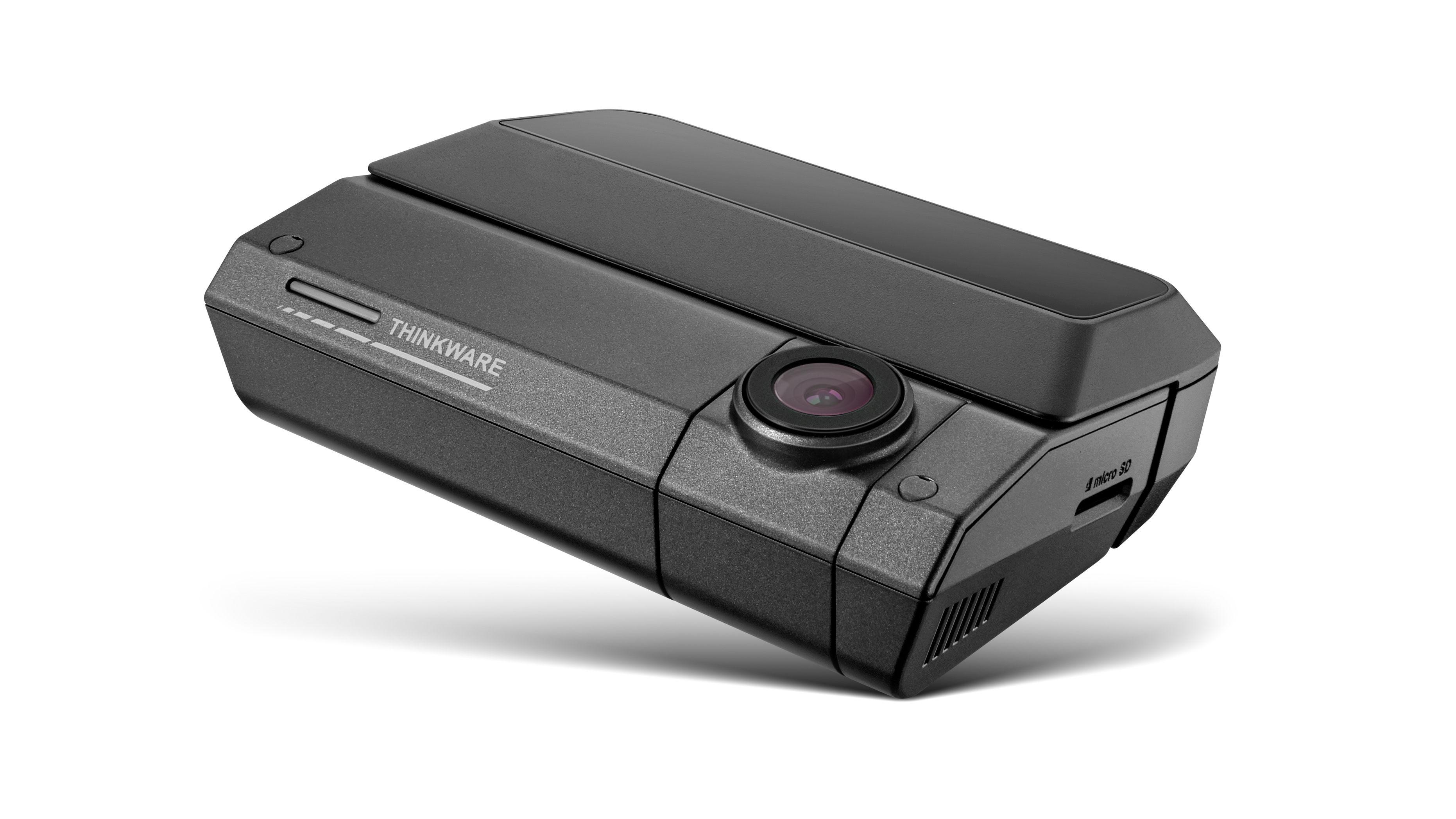
The Thinkware F790 is a smart and subtle dash cam that, when professionally installed and hardwired, feels like a factory-fitted optional extra. It is easy to set up via the phone app, and records in Full HD, both to the front and rear of your car. Parking mode, HDR and collision warnings complete the package.
-
+
Subtle, distraction-free design
-
+
Bundled with rear camera
-
+
Parking mode runs for 17.5 days
-
-
Hardwiring not required, but highly recommended
-
-
App design is somewhat basic
-
-
Fairly expensive
Why you can trust T3

The Thinkware F790 dashcam shuns a display in favour of a low-profile design. This helps reduce the chance of you being distracted by it while driving, and means it can fit snugly behind, or to the side of, your car’s central rear-view mirror.
Like many of the best dash cams, it records video in Full HD resolution and has a g-sensor which, when a crash is detected, saves a portion of video to the included (32GB) microSD card. In an ideal world, this can then be used as evidence to prove your innocence after a road accident.
The lack of a display means the dash cam is set up, and footage can be viewed, using a smartphone app, called Thinkware Dash Cam Pink. The Thinkware F790 carries a recommended retail price of £199, but for this review we are looking at a kit that also includes a rear-facing camera, like those found in our best front and read dash cam guide. This increases the price to £269.
Thinkware F790 review: Design
This dash cam looks quite different to those with a display. While they tend to be the shape of a large matchbox, this Thinkware has a lower-profile design. Instead of attaching to a mount with a ball-and-socket connection, this camera slots into a mount which then attaches to the windscreen with a large piece of 3M adhesive.
The camera can be removed from this mount, by sliding a lock and pulling the camera. But it’s quite difficult to do this, and we doubt many buyers will bother removing the camera – unless they want to swap it between vehicles – as it’s easy to pop the microSD card out when you want to transfer footage. Or you can use the smartphone app too.
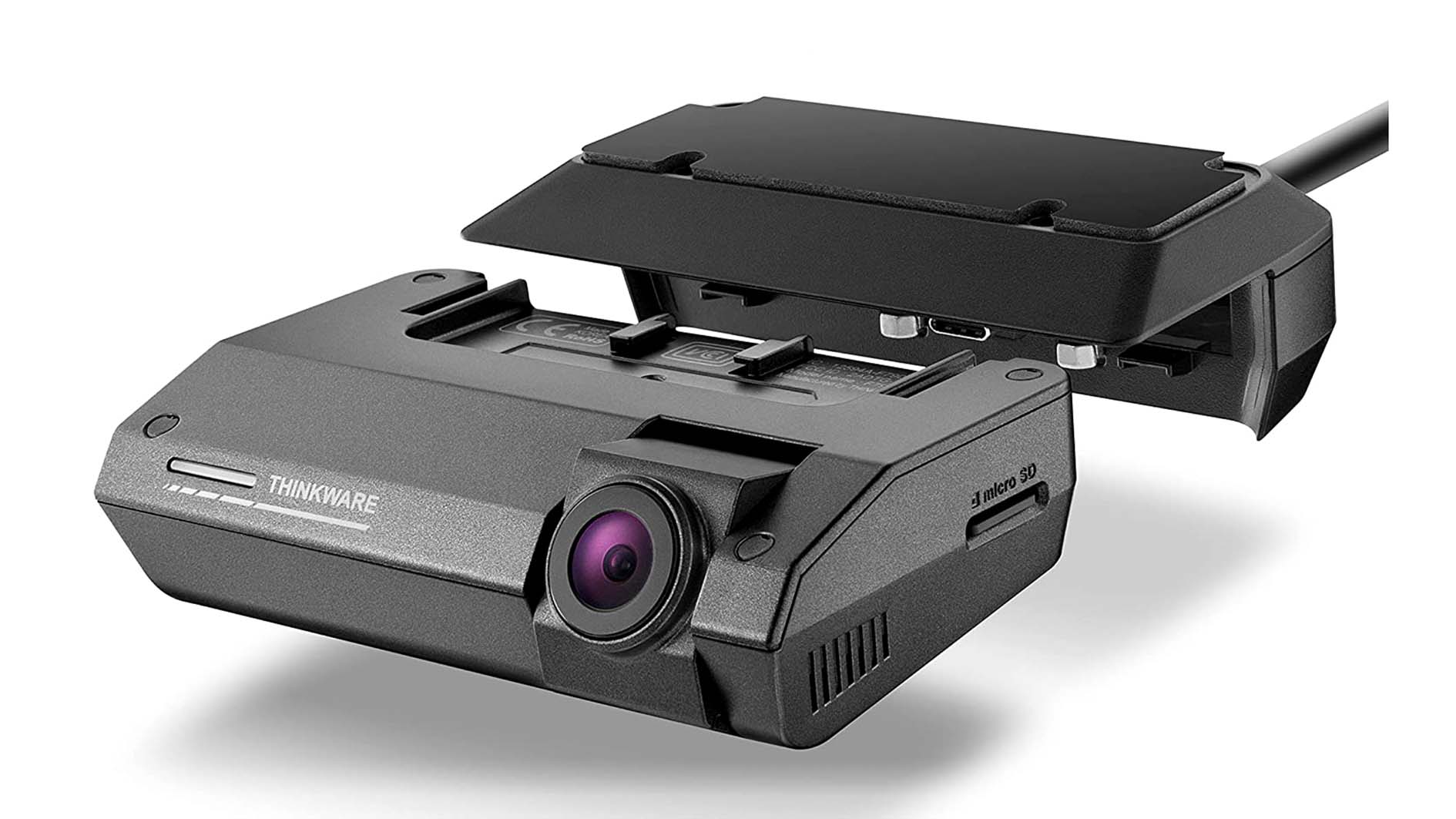
Next to the sliding lock are buttons for manually saving footage, turning audio recording and WiFi on or off, and a power button. Small LED lights show the status of the camera itself and its WiFi connection, which is used to transfer video to your phone.
The lens can be rotated to account for the different rake of car windscreens. There isn’t much adjustment here, but we found just a few degrees of adjustability is enough for almost all vehicles.
Get all the latest news, reviews, deals and buying guides on gorgeous tech, home and active products from the T3 experts
A permanently-attached cable fixes the camera to the included hardwiring kit, which gives it direct power from your car instead of using the 12V socket or a USB port. This is an important factor, as it means this camera really should be installed professionally, with its cables all hidden behind your car interior.
Alternatively, and for this review, a cable for powering from the 12V lighter socket is available from Thinkware. This works fine, but feels like you are doing the Thinkware F790 a disservice.
The rear-facing camera is much smaller, with no buttons, attaches to the rear windscreen with a small piece of 3M adhesive, and has a camera lens that rotates through 360 degrees to get just the right angle. It is powered by attaching a long cable to the included hardwiring kit, or to the optional 12V connection we are using here.
As for dimensions, the F790 is 92mm wide, 71.4mm deep and 34.4mm thick.
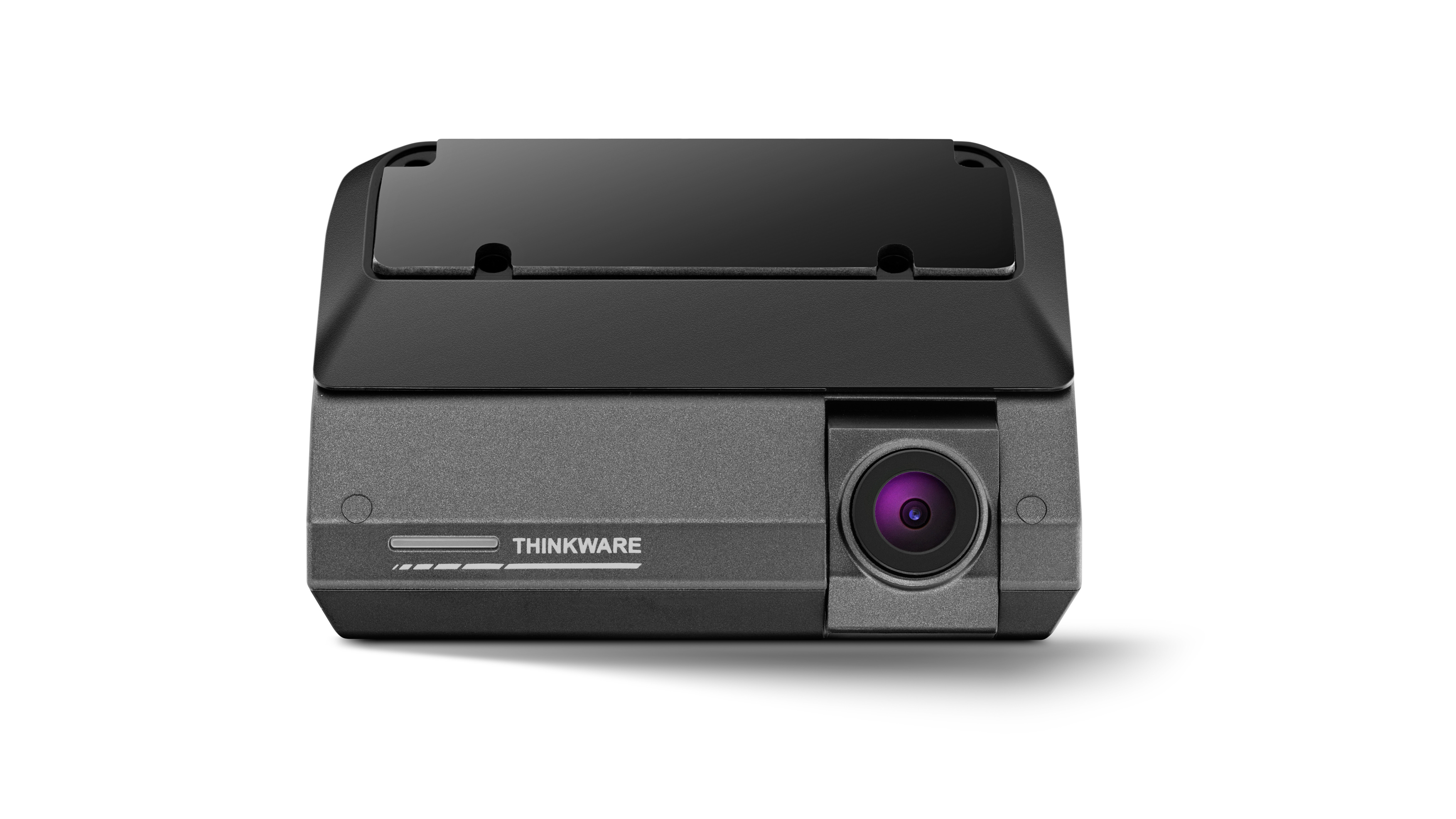
Thinkware F790 review: Features
Both the front and rear camera record at 1920 x 1080 resolution, also known as Full HD. This isn’t as high as some (admittedly cheaper) alternatives, which offer 1440p or even 4K resolution, but Full HD is still good enough for capturing detailed footage without creating large and unwieldy video files.
The front camera has a field-of-view of 140 degrees, while the rear is wider, at 160 degrees. These are both adequate, as any wider than 160 degrees and footage can become warped. On that note, the Thinkware F790 has dewarping technology to help produce video that is as accurate as possible, with minimal distortion.
The camera also featured HDR (high dynamic range), which helps to balance the light and dark areas of video, preventing details being lost in bright sunlight or deep shadows.
When hardwired, there is the option to enable parking mode. This lowers the camera’s power consumption, but ensures it is ready to start recording as soon as movement – such as someone carelessly driving into your car while parking – is felt. Thinkware says the F790 can survive for up to 420 hours, which is just over 17 days, in this mode. So you could leave your car oaked for over two weeks, and the camera will still record the aftermath of a parking prang, without flattening your car’s battery.
GPS is included, adding location and speed data to all recorded video, although this can be switched off if you don’t want the extra information showing in your footage.
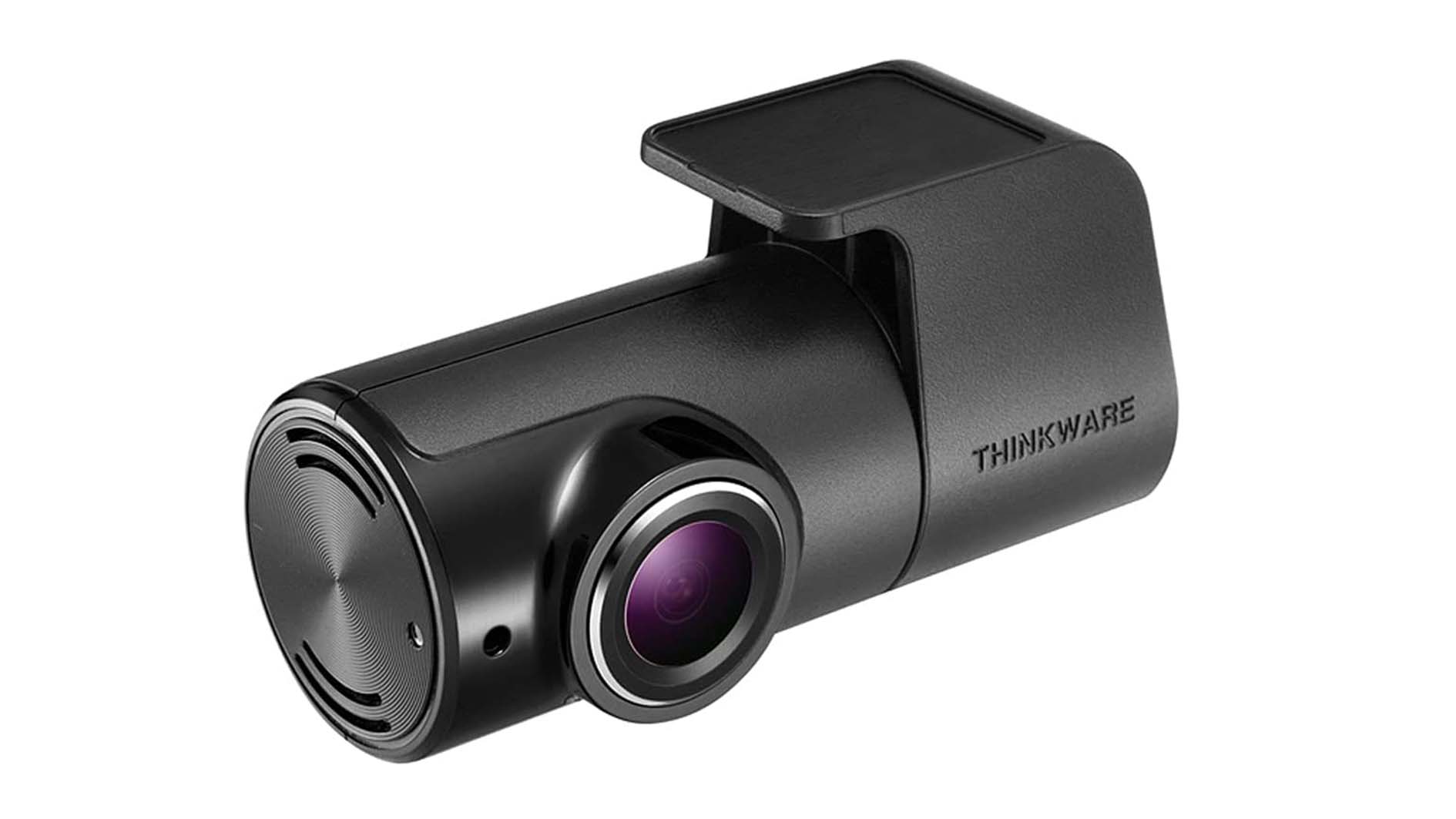
Thinkware F790 review: Video quality
The F790’s video quality is good but not show-stopping. Being Full HD with HDR and night vision, it does the job but isn’t as sharp as dash cams with higher-resolution 1440p or 4K sensors.
Details like number plates and roadside signs are still legible, which is mostly all you really need from a dash cam, but we’d like to have seen a higher resolution given the price. This is especially the case when you consider the Thinkware will be hardwired, professionally installed and likely kept for a long time before the owner considers an upgrade.
Thinkware F790 review: Software and app
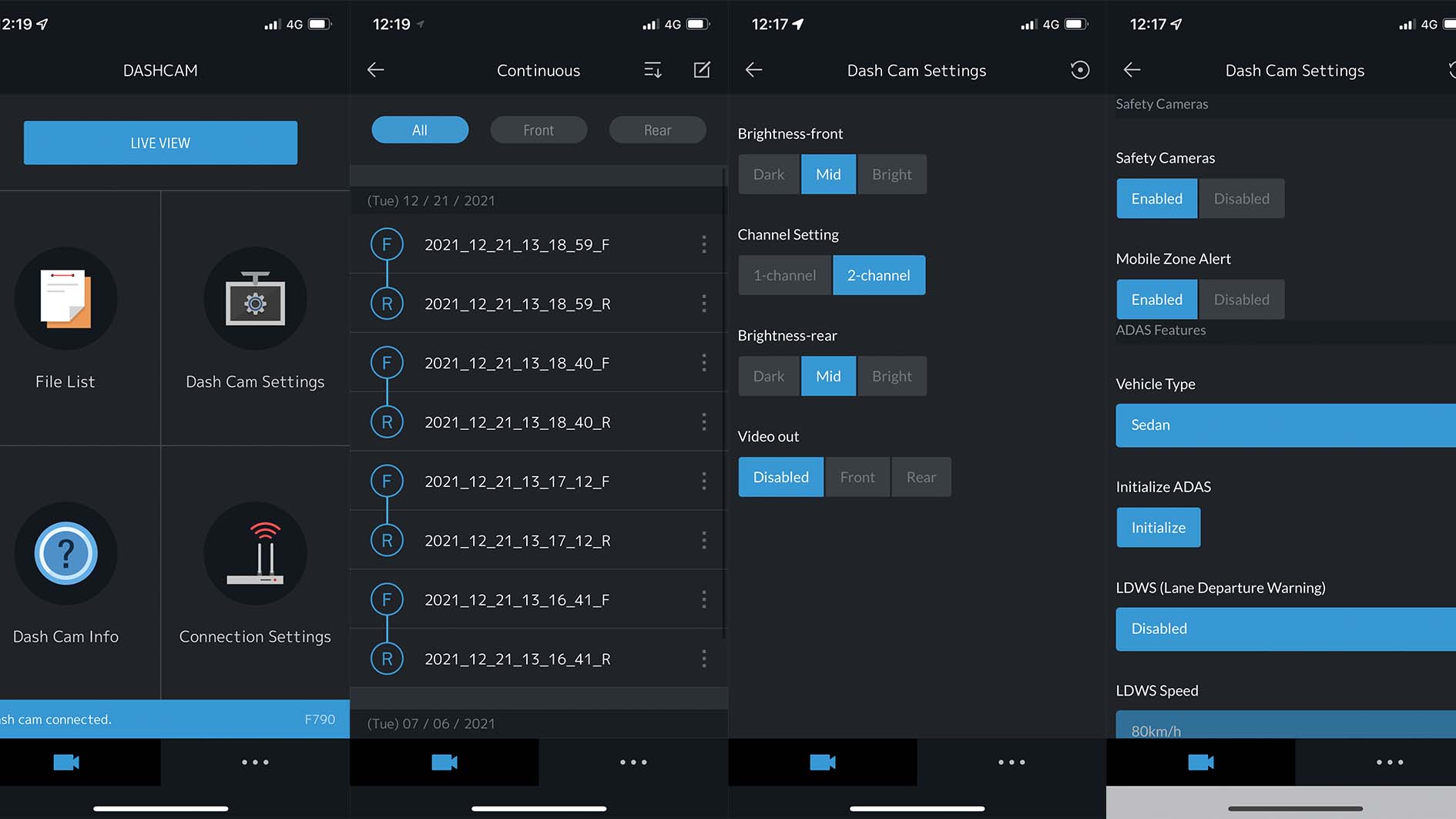
The app is used to check the position of the front and rear camera, thanks to a live video stream and a horizon line to help you position them just so. The app, which connects to the front-facing camera over Wi-Fi is also used to adjust settings like brightness, HDR, battery protection (which prevents the camera from running your car battery flat), and driver safety systems.
The latter includes alerts sounded by the camera when you drift out of lane, or when it thinks you are going to drive into something. Several dash cams offer such systems, but we often choose to switch them off, because their intelligence usually isn't’ up to scratch. This can lead to a dash cam that is more of a distraction than it should be, and something we suspect most drivers would rather do without.
Video can be transferred by removing the microSD card (a 32GB card is included but cards up to 128GB are compatible) or directly to your phone via the app. This works fine, but the design of the app is quite basic. It functions well enough, but lacks the premium feel you might expect from a fairly pricey dash cam.
Thinkware F790 review: Verdict
The Thinkware F790 is a good option for drivers who want a dash cam that feels like a factory-fitted part of their car. Instead of taking up the 12V socket or a USB port, and powered by a wire dangled down from the windscreen, the F790 is intended to be hardwired and professionally installed, with all wires hidden from view.
There is a lot to admire about such a setup. It works the moment you turn your car on (and continues to stay active for 17 days after you park), and is designed so not to be a distraction. These are all positives, and in our opinions so too is the lack of a potentially distracting display.
We only wish the resolution was higher than Full HD, and the lens of the front camera was a touch wider than 140 degrees. Matching the rear camera at 160 degrees would be better, but it’s a relatively small complaint.
Alistair is a freelance automotive and technology journalist. He has bylines on esteemed sites such as the BBC, Forbes, TechRadar, and of best of all, T3, where he covers topics ranging from classic cars and men's lifestyle, to smart home technology, phones, electric cars, autonomy, Swiss watches, and much more besides. He is an experienced journalist, writing news, features, interviews and product reviews. If that didn't make him busy enough, he is also the co-host of the AutoChat podcast.
